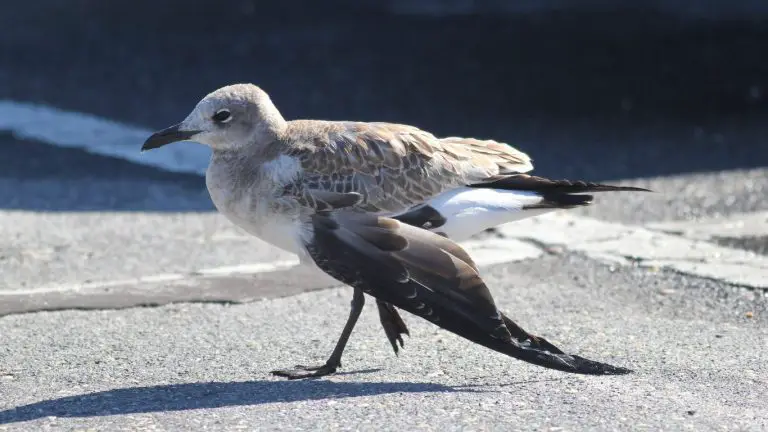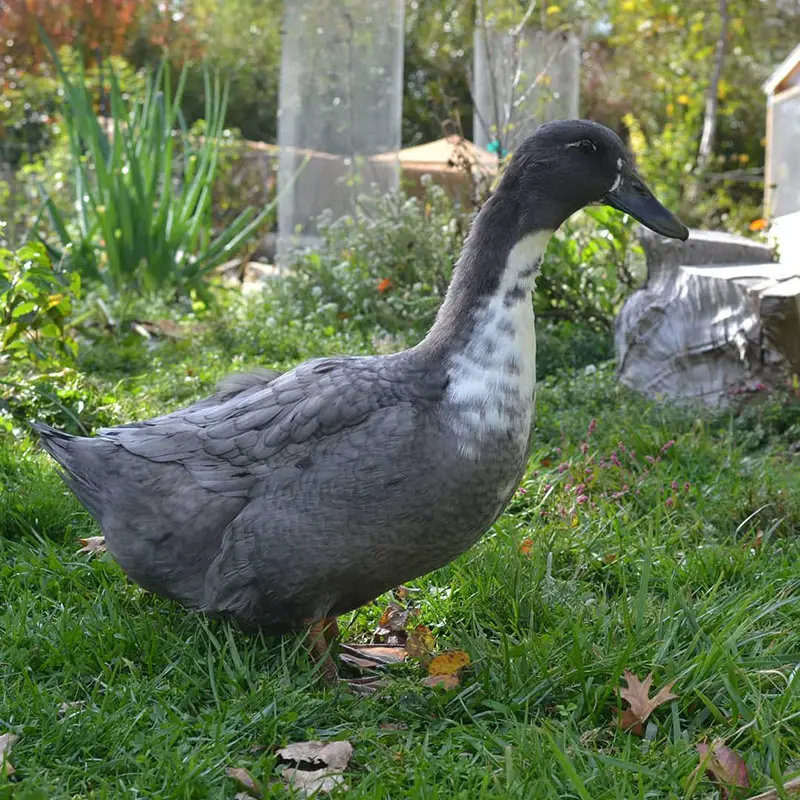It may be devastating to see a wounded bird with a broken wing. You will probably want to assist a bird in healing if you encounter it with a damaged wing. You may be able to assist in fixing a bird’s damaged wing if you have the necessary materials, time, and care.
For those with limited time, the following is a brief response to your inquiry: Gently brace the wounded wing after capturing the bird with care. Give the bird a warm, comfortable place to rest while its wing heals, along with food, drink, and shade.
As soon as you see any problems, take the bird to a wildlife rehabilitator.
We’ll go over everything you need to know in this in-depth tutorial, including how to feed a bird with a broken wing, how to stabilize the injury, when to get expert aid, and more. You may aid with the bird’s recuperation and, if it heals, perhaps release it back into the wild using the appropriate method.
How to Treat a Bird Injury Initially
Gently Catch the Bird Without Hurting It Any More
It’s crucial to treat wounded birds carefully in order to prevent more damage from occurring. Given that the bird could be afraid or in pain, approach it carefully and cautiously. Carefully cover the bird with a towel or blanket, taking care not to stress on its wounded wing.
By doing this, you may aid in the bird’s protection and stop it from taking off.
Gently Restrict the Bird’s Movement
Limiting the wounded bird’s mobility once you have it under control can help to avoid further stress or harm. Put the bird in a little carrier or box that has been lined with paper towels or a gentle cloth.
Ensure that the container is sufficiently secured to keep the bird from escaping and has some air openings. This will lessen the chance of future injury and assist in keeping the bird calm.
Establish a Calm Area Apart from People and Other Animals
It’s critical to offer the wounded bird a peaceful, secure area to heal after confining it. Locate a peaceful space where humans and other animals don’t congregate so the bird may sleep soundly.
Because abrupt movements or loud sounds might stress a bird, keep the surroundings quiet and uncluttered. Recall that birds are delicate animals that need a calm atmosphere in order to recover.
Never Attempt to Mend the Wing Yourself
It’s crucial to fight the impulse to attempt mending the bird’s damaged wing oneself, even if it may be tempting. Because of their complicated musculature and fragile bones, birds are not suitable candidates for wing repairs that are attempted without the necessary expertise.
Instead, get in touch with a nearby animal rescue group or a certified wildlife rehabilitator. They are equipped with the knowledge and resources needed to provide the bird the treatment and rehabilitation it needs.
You may learn more about tending to wounded birds by visiting websites such as www.audubon.org or www.wildliferehabber.com. These websites provide helpful information and recommendations on how to assist wounded animals.
Maintaining Balance and Guarding the Broken Wing
Stem gently against the bird’s body to immobilize the wing.
Stabilizing and shielding the wounded wing is essential when tending to a bird that has broken its wing in order to stop additional harm and encourage recovery. First, gently immobilize the wing by pressing it against the bird’s body.
One hand may be used to gently hold the wing near to the bird’s body while the other is used to support the bird’s body. This will assist in keeping the wing still and stop any needless movement that might make the damage worse.
Use cloth or gentle bandages to cushion the wing.
It’s crucial to cushion the wing with gentle bandages or cloth after immobilizing it to provide it more support and defense. This may lessen the chance of the bird suffering any further wounds or pain.
A thin layer of soft material, such cotton or gauze, may be utilized to cushion the wounded wing. Avoid wrapping the bandages too firmly as this may impede the flow of blood or injure the bird more.
Keep a close eye out for self-harm in the bird.
As you stabilize and shield the injured wing, keep a careful eye out for any indications that the bird is hurting itself. When handled, birds may feel anxious or nervous, which may cause them to flail about and maybe hurt themselves further.
To avoid causing further harm, pay careful attention to the bird’s behavior and be prepared to modify your grip or technique as needed.
Verify Wing Alignment Often
It is essential to regularly assess the wing’s alignment while stabilizing and shielding the injured wing. The wing and the bird’s body should be correctly positioned and straight. Any misalignment might be a sign of a more serious injury or the need for extra veterinarian care.
To ensure that the bird heals and recovers properly, it is advisable to get expert assistance if you see any anomalies in the alignment of the wing.
Always remember that you should always seek expert assistance from a veterinarian or wildlife rehabilitator if you come across a bird that has damaged wings. They are equipped with the knowledge and resources needed to provide the wounded bird the care and attention it needs.
Taking Care of the Bird While It Recovers
Use a Heating Pad or Lamp to Keep the Bird Warm.
Keeping a bird warm is one of the most crucial things you can do to aid it if it has a broken wing. Because they have warm blood, birds must be able to regulate their body temperature in order to heal. To provide the bird a source of warmth, you may use a light or heating pad.
Place it next to, but not directly on, the bird’s cage, and make sure the temperature is adjusted to a safe and comfortable level.
Supply Water and Healthful Foods
It’s critical to keep the bird hydrated and provide it the right food throughout its recuperation. Give the bird easy access to fresh water in a small dish. Soft, simple-to-eat meals like fruits, vegetables, and soaking seeds may also be given to the bird.
Steer clear of giving the bird anything crunchy or hard to eat as this might strain its wounded wing.
Make sure the bird’s cage is hygienic and clean.
Keeping the surroundings hygienic and tidy is crucial to the bird’s rehabilitation. To avoid the accumulation of waste and germs, clean the bird’s cage on a regular basis. Clean the perches, cage bars, and any other surfaces the bird comes into touch with using a mild disinfectant.
This will encourage a more robust healing process and help avoid infections.
To relieve stress, give the bird some peace and quiet.
It’s important to offer the bird a peaceful and quiet environment since stress might obstruct the healing process. The cage should be placed in a peaceful, non-noisy section of your house, away from loud sounds and disruptions. Restrict how much you handle and engage with the bird in order to prevent adding to its stress level.
The bird will be able to unwind and concentrate on mending if a calm atmosphere is created.
When to Get Professional Assistance
Even while a bird’s damaged wing may be repaired at home, there are certain circumstances in which seeing a specialist is imperative. Here are some pointers to think about:
If the Break Seems To Be Serious or Difficult
Get in touch with a wildlife rehabilitator or a veterinarian if the bird’s wing is seriously shattered or if the break seems complex. These experts are equipped with the knowledge and skills needed to manage challenging situations and provide the bird the best care possible.
Fixing a significant or complex injury oneself runs the risk of hurting the bird further and delaying its recuperation.
Should You Think There May Be Injuries Beyond the Wing
It’s crucial to determine whether the bird has any additional wounds in addition to its broken wing. Given their fragility, birds are susceptible to other traumas such internal injury or head trauma after a fall or accident that breaks a wing.
It’s essential to speak with a specialist who can do a complete assessment and provide the proper care if you think the bird has wounds other than those on its wings.
Should the Bird Display Symptoms of Trauma or Illness
Common side effects from a damaged wing in a bird include shock and infection. The inability of the bird’s body to properly circulate blood and oxygen results in a condition of shock. If the shattered bone pierces the skin, leaving an open wound, infection may occur.
It is imperative that you get professional attention right away if you discover any indications of infection, such as redness, swelling, or discharge, or if you notice signs of shock, such as pale gums, quick breathing, or lethargy.
They are able to provide the medical attention required to stop further issues.
If You Are Unable to Offer Sufficient Long-Term Care
A bird’s injured wing needs constant attention and care to be fixed. To guarantee the bird’s well-being and recuperation, it is essential to give a proper habitat, sufficient food, and continuous monitoring.
It is advisable to speak with a specialist who can handle the long-term care duties if you are not able to provide the required care. The facilities and resources available to wildlife rehabilitators and avian vets will provide the bird the greatest opportunity for a full recovery and ultimate release back into the wild.
Keep in mind that the bird’s welfare comes first. It is always preferable to err on the side of caution and get in touch with a qualified professional who can provide the required care and assistance if you are unclear about whether to seek professional help.
Returning the Bird to Its Natural Habitat
The next stage is to release the bird back into the wild once it has been successfully nursed back to health from a broken wing. To provide the bird the greatest chance of surviving, this procedure has to be carefully considered. When releasing a bird with a repaired wing, you should do the following actions:
Hold off on releasing until the wing has fully healed.
Make sure the bird’s wing is completely healed before releasing it. The behavior and ability to fly of the bird may be used to ascertain this. The bird is probably ready to be released if it can fly short distances under control and can use its wings freely without displaying any pain or discomfort.
It’s crucial to take your time with this procedure since releasing a bird too soon will reduce its chances of surviving.
Evaluate the Bird’s Capability to Fly in a Closed Space
You should assess the bird’s flying prowess in a confined area before releasing it into the wild. This may be achieved by giving the bird access to a large, contained space—like a room or an aviary—where it can practice flying unhindered.
Make sure the bird can land safely by keeping an eye on its flying patterns. By taking this step, you may make sure that the bird is ready to take on the difficulties of the wild, having recovered its strength and coordination.
Return the bird to its original location after releasing it.
It is preferable to release a bird back into the wild in the same location where it was discovered. By doing this, you may be sure that the bird is used to its surroundings and is more likely to return to its native environment.
Studies have shown that birds released into familiar environments are more likely to survive and successfully reintegrate into their home colonies. You’re giving the bird the greatest chance of surviving in the wild when you release it into its usual region.
Maintain Food Provision and Post-Release Monitoring
You should keep giving the bird food and keeping an eye on its development even after it has been released. This may be achieved by putting food supplies, such bird feeders or dispersed seeds, close to the release location.
By doing this, you are improving the bird’s chances of survival and assisting it in its return to the wild. Make sure the bird is surviving in its native habitat and adjusting well by checking on it on a regular basis.
If you see any indications of discomfort or damage, get medical attention right once.
Recall that although releasing a bird back into the wild may be a fulfilling experience, it must be done with the greatest care and respect for its welfare. You can offer the bird the greatest opportunity to make a successful return to its native home by adhering to these guidelines.
Final Thoughts
It takes time, delicate treatment, and vigilant observation to cure a wounded bird and restore its broken wing. Many birds may heal totally from a broken wing given enough time, suitable rest, food, and water, as well as a suitably stabilized wing.
Keep a tight eye on the bird’s development and don’t be afraid to consult wildlife specialists when necessary. You can help give an injured bird the greatest chance of recovering and going back into the wild with a little TLC and rehabilitation treatment.


![Are Mockingbirds Aggressive To Other Birds? [Explained]](https://birdsology.com/wp-content/uploads/2024/01/14632.webp-600x400.webp)



